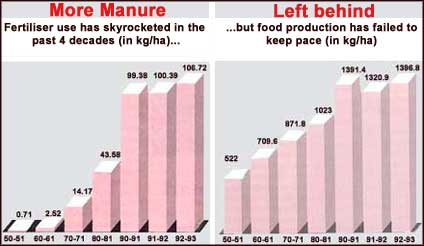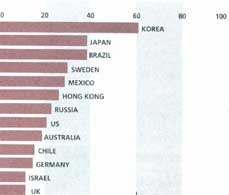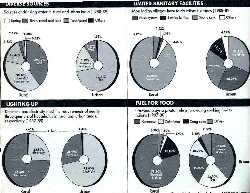Fewer drops to drink
Water consumption the world over is growing - it is likely to grow by five times between 1940 and 2000. This, coupled with the pollution of existing water resources is causing water scarcity in more
Water consumption the world over is growing - it is likely to grow by five times between 1940 and 2000. This, coupled with the pollution of existing water resources is causing water scarcity in more

India's investment in research and development activities in 1990-91 was Rs 4,186.83 crores. This was just 0.89 per cent of the country's gross domestic product - a paltry figure compared

To lessen the burden that the burgeoning world population puts on resources, family planning programmes will have to cover about 650 million people by AD 2000 and about 880 million by AD 2015,

OVER the years, the application of chemical fertilisers has grown vertiginously in India. In percentage terms, however, this spectacular rise has left far behind the growth in food production,
All disasters, natural or human-made, have one thing in common; their capacity to maim, cause unmentionable misery, and loss of property and lives. But there is a twist in the tale. The World

conced in a rarified world of lecture rooms and ivory towers, pilloried by their critics as lazy, overpaid and irrelevant, the dons of the academic world were pinned squirming on a wall by a study
They do not always make it to the front pages or to the television screen, yet every minute disease and malnutrition kills nearly 24 of them. According to the report, The State of the World's

THE Human Development Report 1994 of the United Nations Development Programme reveals that economic relationships between the North and the South remain as skewed as before. Development assistance or

FAR from the media hoopla, the developing world is quietly undergoing a reproductive revolution. According to a report released by the World Fertility Survey 1992, birth rates in the developing world have gone down by 1/3rd since the mid 60's. One remarka

THIS story is one of horrifying domestic slaughter. The preamble to it is that the World Conservation Strategy (International Union for the Conservation of Nature and Natural Resources 1980),

DURING the '60s and '70s, firewood prices in India shot up dramatically following the gross neglect of the needs of people from forests. The ratio of firewood to food grain prices doubled between

IT IS extremely difficult to measure the scientific performance of a nation, both statistically and in terms of effect. But the few indicators that do exist clearly indicate that developing countries

"THE international mobility of students is a massive phenomenon, " says the World Science Report 1993. Out of a total of 61 million students in the world, about 2 per cent (1.2 million) study in

GIVEN the state of pollution in Indian cities and rivers, most people would conclude that nothing is being done to control pollution. But figures have an unusual knack of belying common thinking.

GLOBAL bicycle production rose by more than 5 million in 1992 but world automobile production remained almost stagnant at the 1991 level of 35 million. In 1992, 100 million bicycles were produced the

EVIDENCE of protein shortage is accumulating all over the world, according to Vital Signs 1993, a World Watch Institute publication. The disturbing evidence comes from the production trends of the

Living conditions remain abysmally poor in India, with a big difference between urban and rural areas. Nearly three-quarters of urban households lived in pucca houses, compared to only about a

ALTHOUGH world trade in forest products continues to be dominated by the industrialised countries, exports of forest products have come to play an important economic role in many developing

FAMILY planning practices are growing rapidly, but not fast enough to make a dent in the world's population. The UN argues there is a large unmet demand for family planning services. In one

THE ACHIEVEMENTS are quite remarkable. But the challenge that still remains is quite daunting. During the 1980s, 20 developing countries halved their under-5 death rates -- the number of children